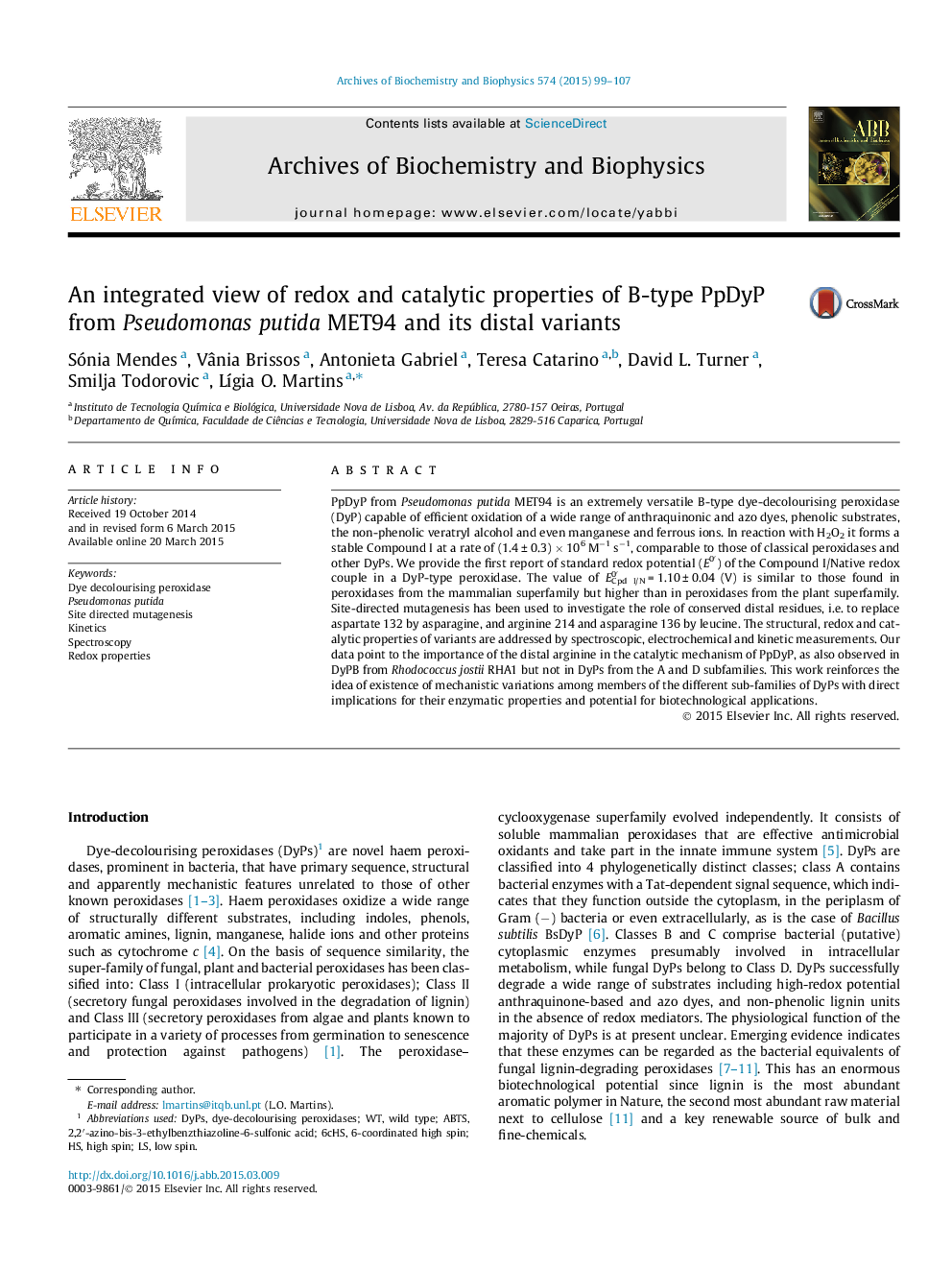| Article ID | Journal | Published Year | Pages | File Type |
|---|---|---|---|---|
| 8289710 | Archives of Biochemistry and Biophysics | 2015 | 9 Pages |
Abstract
PpDyP from Pseudomonas putida MET94 is an extremely versatile B-type dye-decolourising peroxidase (DyP) capable of efficient oxidation of a wide range of anthraquinonic and azo dyes, phenolic substrates, the non-phenolic veratryl alcohol and even manganese and ferrous ions. In reaction with H2O2 it forms a stable Compound I at a rate of (1.4 ± 0.3) Ã 106 Mâ1 sâ1, comparable to those of classical peroxidases and other DyPs. We provide the first report of standard redox potential (E0â²) of the Compound I/Native redox couple in a DyP-type peroxidase. The value of E0â²Cpd I/N = 1.10 ± 0.04 (V) is similar to those found in peroxidases from the mammalian superfamily but higher than in peroxidases from the plant superfamily. Site-directed mutagenesis has been used to investigate the role of conserved distal residues, i.e. to replace aspartate 132 by asparagine, and arginine 214 and asparagine 136 by leucine. The structural, redox and catalytic properties of variants are addressed by spectroscopic, electrochemical and kinetic measurements. Our data point to the importance of the distal arginine in the catalytic mechanism of PpDyP, as also observed in DyPB from Rhodococcus jostii RHA1 but not in DyPs from the A and D subfamilies. This work reinforces the idea of existence of mechanistic variations among members of the different sub-families of DyPs with direct implications for their enzymatic properties and potential for biotechnological applications.
Related Topics
Life Sciences
Biochemistry, Genetics and Molecular Biology
Biochemistry
Authors
Sónia Mendes, Vânia Brissos, Antonieta Gabriel, Teresa Catarino, David L. Turner, Smilja Todorovic, LÃgia O. Martins,
